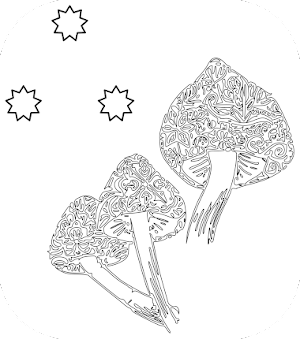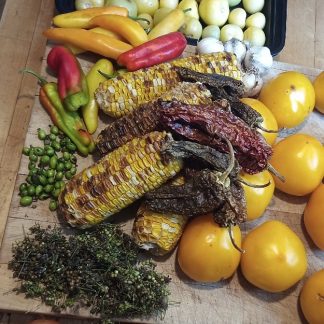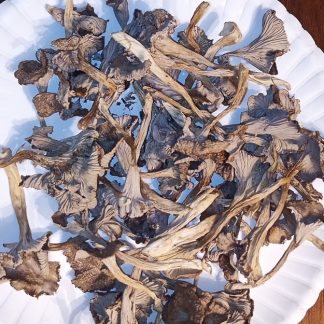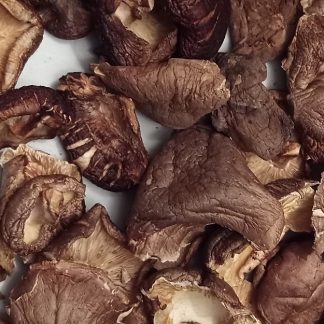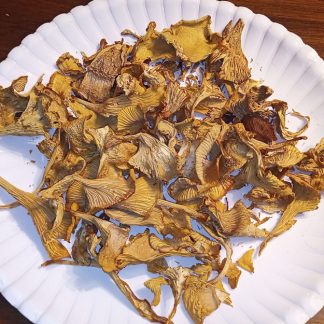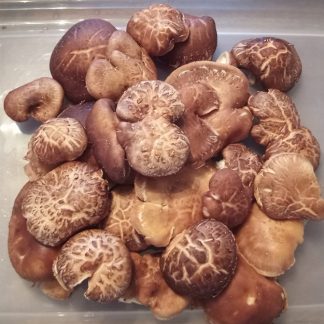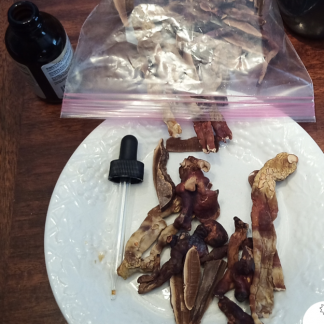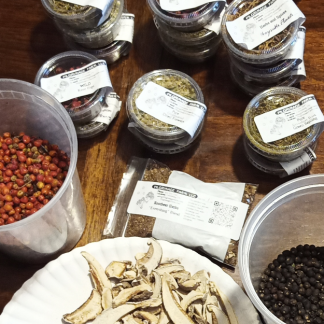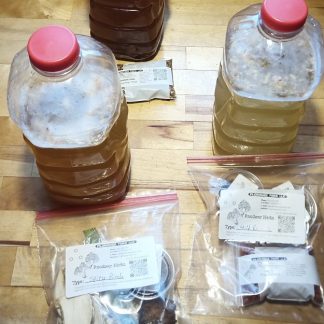In Southern Middle Tennessee, we have 3 edible Sumac varieties, all have their distinct qualities, and they start in May and fruit all the way thru September.
- Fragrant Sumac
- Staghorn Sumac
- Shining Sumac
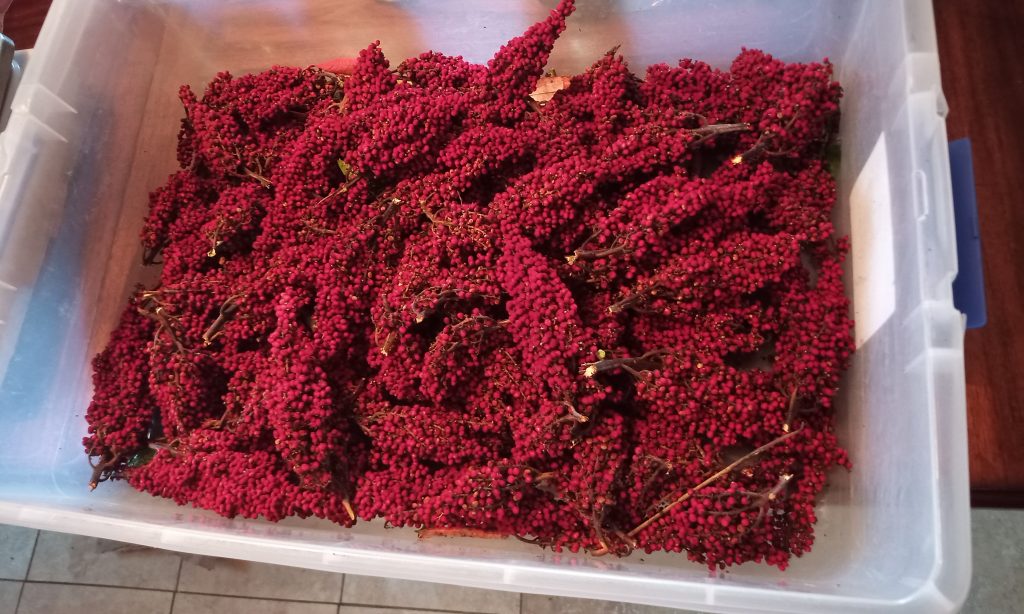
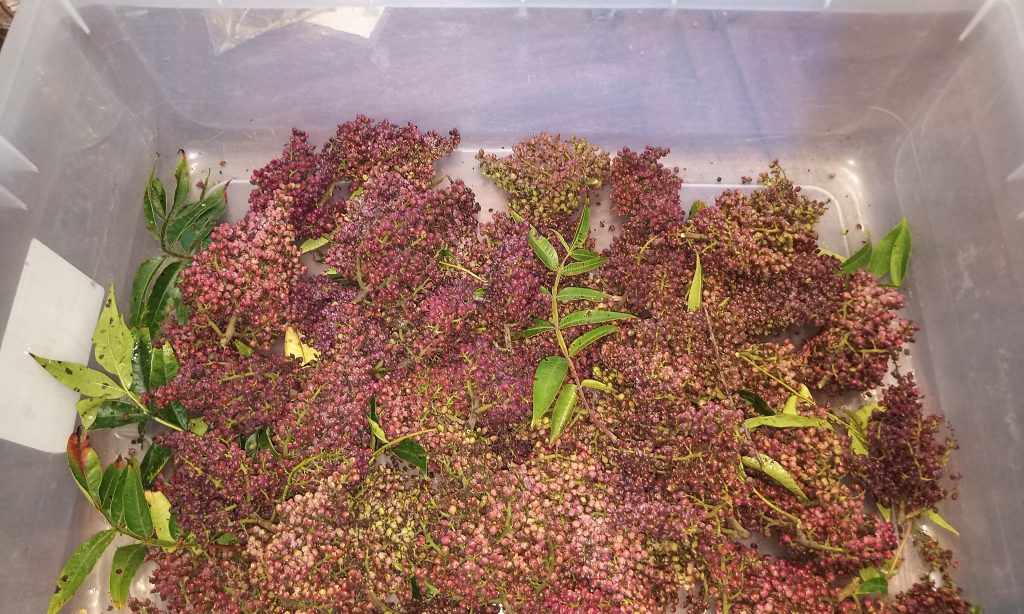
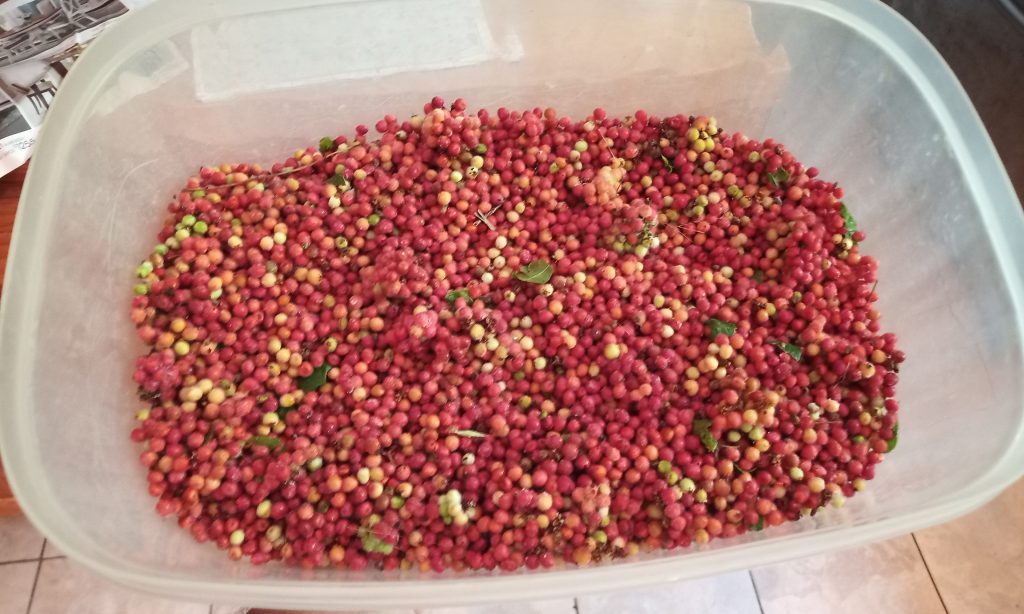
Pictured above, starting at the left, we have Staghorn first, this is the most common widespread and well-known sumac. It is also the least exciting from a culinary standpoint. Growing in a relatively narrow and long “horn” they stick up above the foliage mid-summer and last longer than the others. The taste is mild citrus and the berries are 99% pit with a little coating of red powder which adds more color to the experience, for the “pinkest” lemonade.
In the middle is the amazing Shining Sumac. The largest “horns” of the group, these look much like miniature grape bunches, they have a purple color, and hang pointing down on the tree. They come last in the season, not mature until August, and they are gone within a month or so. These produce a large amount of yeast and have a very sharp high acid citrus taste. They make the most flavorful “lemonade” but they wont turn your drink pink.
On the right we saved the best for last, Fragrant Sumac. The first to appear, they are often ready to harvest in May but will ripen and persist thru the summer. Growing on a much smaller shrub style plant, and producing 3 fingered corms rather than horns, this is the rarest, least known and most wonderful culinary delight. In Turkey this is harvested, dried, and ground into “sumac” seasoning, used to tenderize and season meat, most notable known as a primary ingredient in Za’atar spice blend. Fresh, these are just mind blowing, the yeast they grow is incredible, the pit remains small if harvested early and they make delightful little capers. They have a citrus taste with peppery notes.
